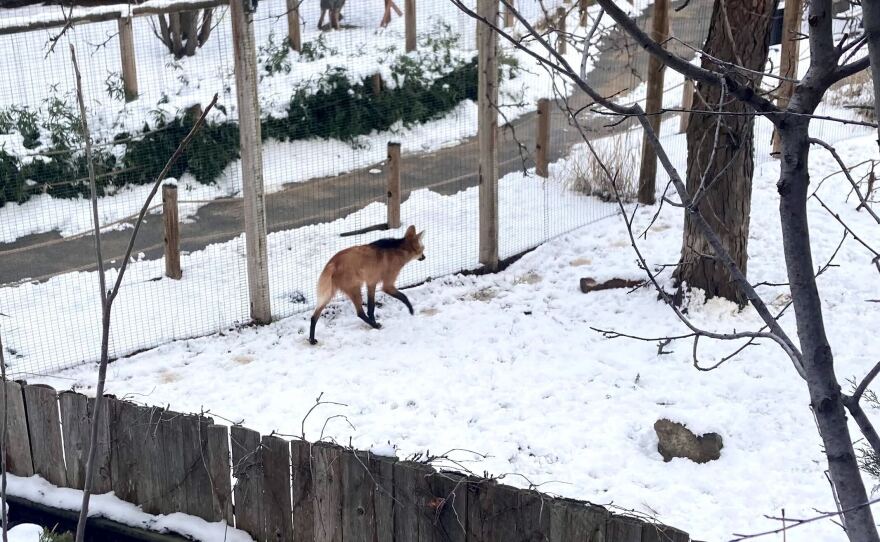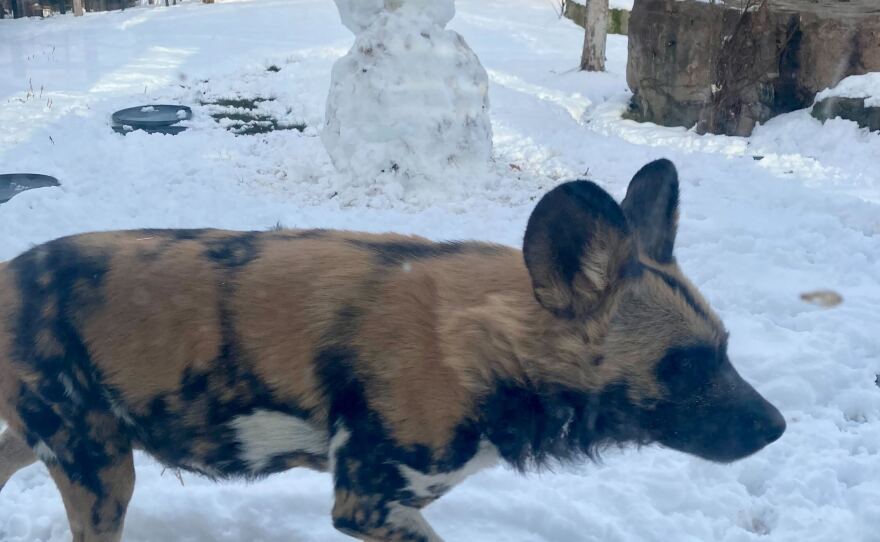As Idahoans navigate the recent snowfall, residents at Zoo Boise are also adjusting to the weather. After the first big storm of the season, the whole place was blanketed in white, snow muffling almost all sounds. Only the pied crows were making a ruckus.
“It's kind of a serene place where the snow is out and there's a little bit of water in our lagoon, and it's just kind of really beautiful this time of year,” explained Jeff Agosta as he walked around the mostly empty zoo on Wednesday afternoon.
Dax, Cassius and Teddy, three African Wild Dogs from the same litter were particularly interested in what the humans were doing near their enclosure.
“They are very quiet when they're doing their patrol rounds. But then you can see they’ll stop,” Agosta said. “They’ll see people out here shoveling snow and they saw a zookeeper, Emily, walking around, which means it's close to feeding time.”
Groundskeepers spent the morning clearing the snow from the pathways while zookeepers made their rounds to make sure the animals had what they needed to stay warm.

The winter protocol is straightforward.
Many of the animals, like the zoo’s small birds and reptiles, are sent inside or offsite during the cold season as they can't survive in freezing weather. For giraffes, the low temperatures are not the issue. They are kept dry and warm during snowy days to prevent them from tripping on the icy ground. At 18 feet tall, a fall could be fatal.
But others, like the Maned Wolves, Lions or Nyala Antelopes get to hang out in the cold.
“They enjoy going out and frolicking in the snow,” Agosta said. “Then they can choose to come inside if they want to. It's kind of like a snow day.”
The zoo gives the animals heated water bowls, to prevent frost, and extra heaters disguised as rocks that look like their natural habitat. After Boise saw six inches of snowfall this week, zookeepers even made them snowmen.
“If it's a carnivore, they'll drip some blood on it. If it's something that eats, loves fruit, they'll drop a little fruit juice on it,” Agosta said.
Some animals are a bit scared of the snowmen, while others, like Paji the Sloth Bear, are very intrigued.
“She kind of picked at it for a few minutes, kind of almost scratching the head of it, and eventually just took a big swipe and knocked the head off and started licking and chewing on the snowman's head.”
The animals that come from wintery habitats, like the snow leopards or the red pandas, are particularly happy when it snows.
“They're actually more active this time of year than they are in other parts of the year,” Agosta said.
Vlad the Steller’s sea eagle is comfortably perched outside under a canopy. He comes from Eastern Siberia, so he’s not bothered by the temperatures. Same goes for the snow leopards. Despite having a warm indoor den, they are curled up outside taking a nap, coated in snowflakes.
As closing time approached, Akasha the tiger stood outside in her enclosure, roaring loudly to let everyone know she was ready for dinner time. Like many creatures at the Boise Zoo, she’s also been patrolling her enclosure, stopping regularly to stretch, roll around in the snow and shake the white dust off from her thick orange coat.









